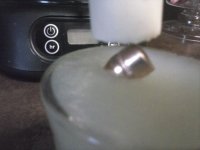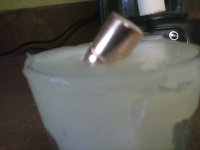marine6680
New member
From a strictly scientific point yes...
Layman's terms... they can make things more relatable.
Layman's terms... they can make things more relatable.
When it comes to bullets... numerous tests have born these things out.
Heavy bullets out penetrate lighter faster bullets of the same caliber.
or your second example... spheres behave differently than bullets...
Also, unless you are launching those spheres are high speed, the effects are going to be different.
Dropping a small sphere from a few feet into a container of viscous fluid... is not the same as a fired bullet.
What is the more dangerous to stand in the way of:
If you take two spheres of identical dimension and exterior construction, but fill them with differing amount of lead (so that they have a difference in mass)
...
And then either drop or launch both spheres into a consistent test medium at differing speeds so that they each generate equal KE. They penetrate the test media to identical depths.
There isn't even a coherent hypothesis for how it works otherwise.



I'm going to see if our resident physics PhD will check in on this thread... zombietactics can argue with him.
I did a simple experiment in the kitchen to see if I was wrong. Please understand this is not exact or extensive measuring just by eyeballing.
At typical handgun velocities, describe to me the established physical principle(s) by which they behave differently.
However, here's a paper written by a Dr Ashby regarding arrow penetration. He agrees with me, BTW.
What is the more dangerous to stand in the way of:
A 20-ton truck coming at @ 0.1 m/s? (Momentum= 2000, KE= 1 Joules)
A 20 kg 1 sq/m metal plate coming at you @ 100 m/s ? ( Momentum= 2000, KE= 1,000,000 Joules)
Provided the truck is not accelerating under power, or coming down a hill ... you can probably stop it with some effort. You need to overcome momentum, which is conserved/transferred by your pushing back on it.
